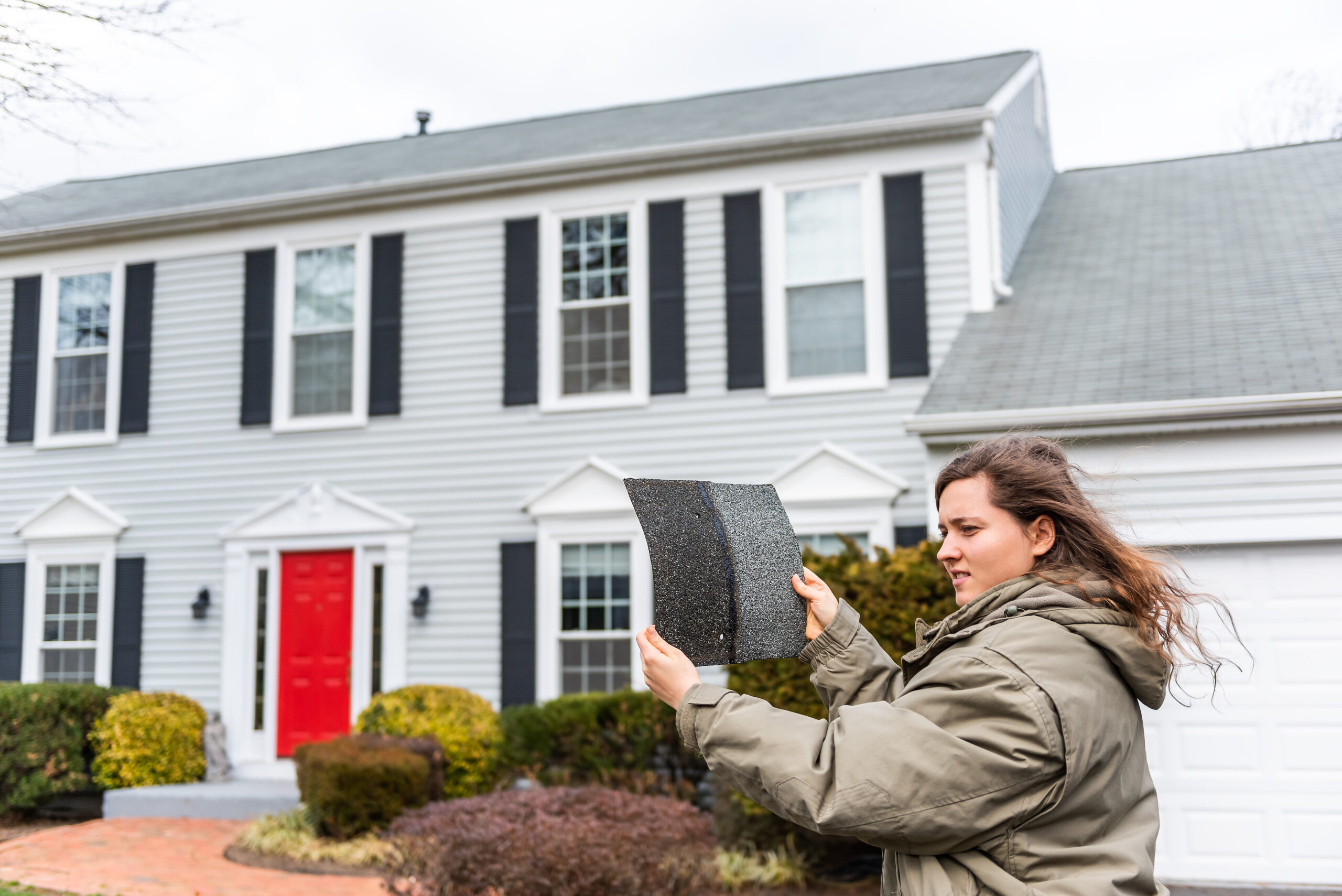As winter descends, homeowners must fortify their houses against the onslaught of winter weather, not just snow and ice, but also potential roof wind damage. At Vermont Construction Company Roofing Division, we understand the unique challenges posed by winter winds and offer comprehensive roofing services to safeguard your home, including a wind warranty (up to 130mph for the first 15 years) on full roof installs. In this blog post, we’ll delve into the impact of wind on roofs, explore common signs of wind damage, and highlight how proactive measures can help provide the protection your home needs.
What Wind Speed Causes Roof Damage?
Understanding the wind speed at which roof damage can occur is crucial for homeowners. Generally, winds exceeding 50 mph are known to cause minor damage, such as loose shingles or siding. However, as the wind speed increases, so does the risk of severe damage.
How Much Wind Can a Roof Withstand?
Roof designs and materials play a significant role in determining how much wind a roof can endure. While most roofs are engineered to withstand typical wind speeds, factors such as age, maintenance, and installation quality can impact a roof’s resilience. In extreme cases, wind speeds exceeding 100 mph can lead to catastrophic roof failure. Although such occurrences are rare, particularly in the northeast, it highlights the importance of reinforcing roofs to handle varying wind intensities, especially during winter storms.
What Does Wind Damage Look Like on a Roof?
Understanding the visual indicators of wind damage on a roof is crucial for homeowners and property managers alike, especially in regions prone to severe weather conditions. Wind can exert significant force on roofing materials, potentially causing a range of issues that, if left unaddressed, may lead to more extensive and costly repairs.
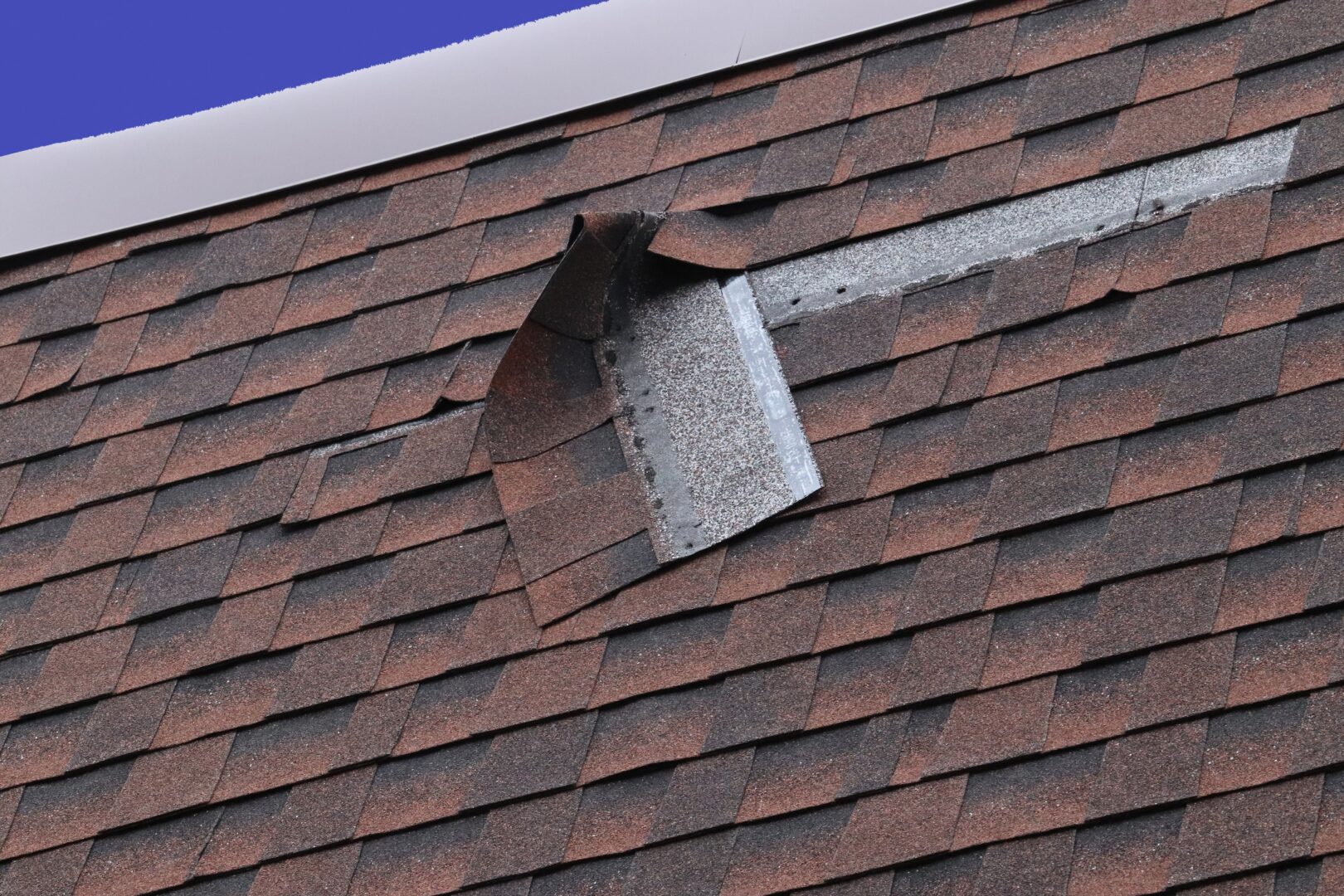
Wind damage on a roof can manifest in various ways, depending on the intensity and direction of the wind, as well as the roofing materials used. Look for missing or lifted shingles, torn or displaced flashing, and signs of water infiltration, such as water stains on ceilings. If you notice these issues, it’s crucial to address them promptly to prevent further damage and help avoid a total roof replacement.
Signs of Wind Damage to Roof Shingles
Wind damage to roof shingles can take various forms, depending on the intensity and direction of the wind. To spot wind damaged shingles, look for these tell-tale signs:
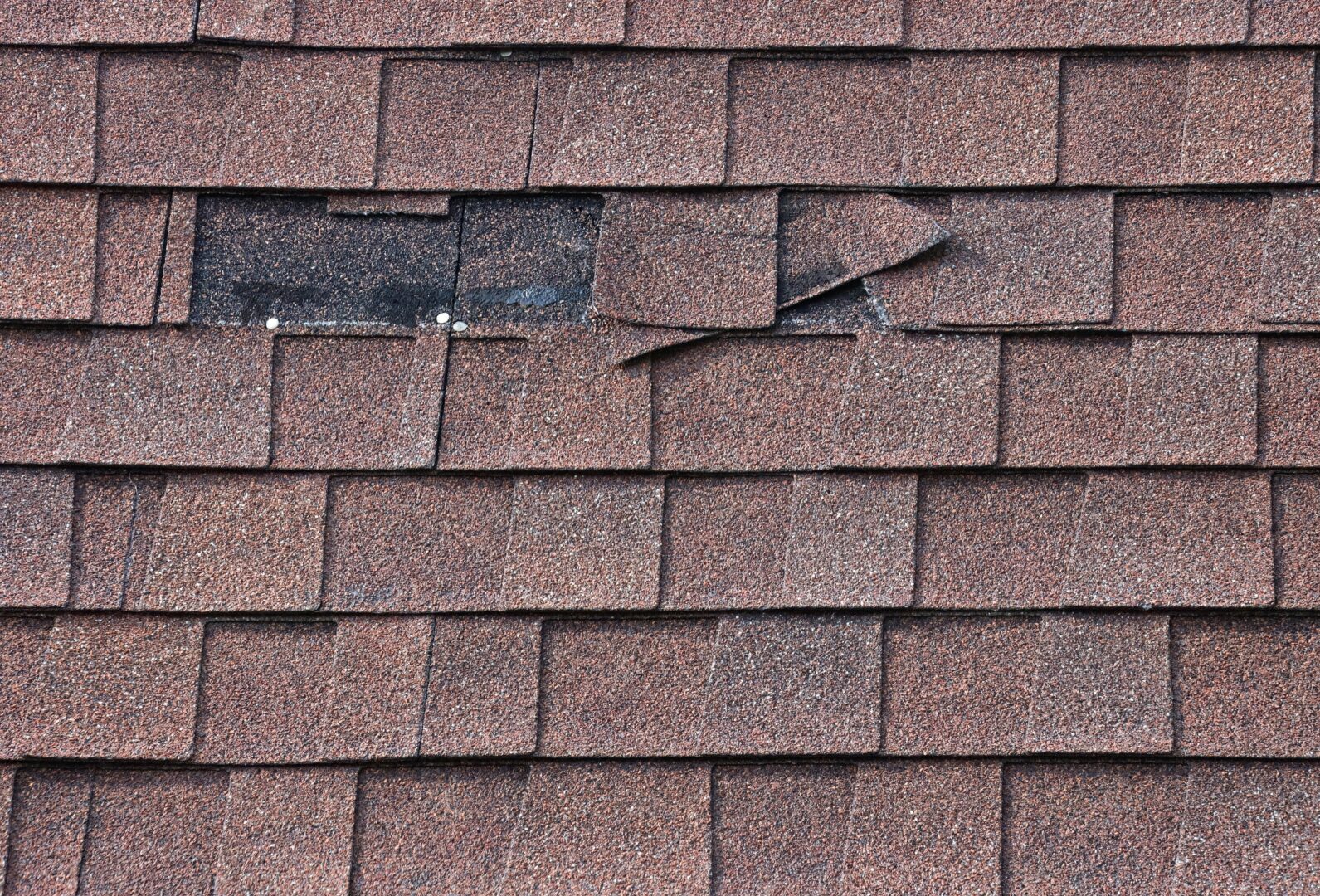
- Missing or Lifted Shingles: Strong winds can lift shingles, causing them to loosen or entirely blow off the roof. Missing shingles leave the underlying structure exposed to the elements.
- Curling or Buckling Shingles: Wind can lift the edges of shingles, causing them to curl or buckle. This compromises the integrity of the roof and may lead to leaks.
- Granule Loss: Intense winds can cause granules on asphalt shingles to wear away. Look for areas with an accumulation of granules in gutters or on the ground.
- Exposed Nails: Wind can lift shingles enough to expose the nails that secure them to the roof. Exposed nails make shingles more prone to further damage and can contribute to leaks.
Signs of Metal Roof Wind Damage
Metal roofs are generally more durable and resistant to wind damage compared to traditional roofing materials like asphalt shingles, and they are widely regarded as the most windproof roof. However, they can still be affected by strong winds, especially if the winds are exceptionally powerful or if the installation wasn’t done correctly. Here are some signs of wind damage on a metal roof:
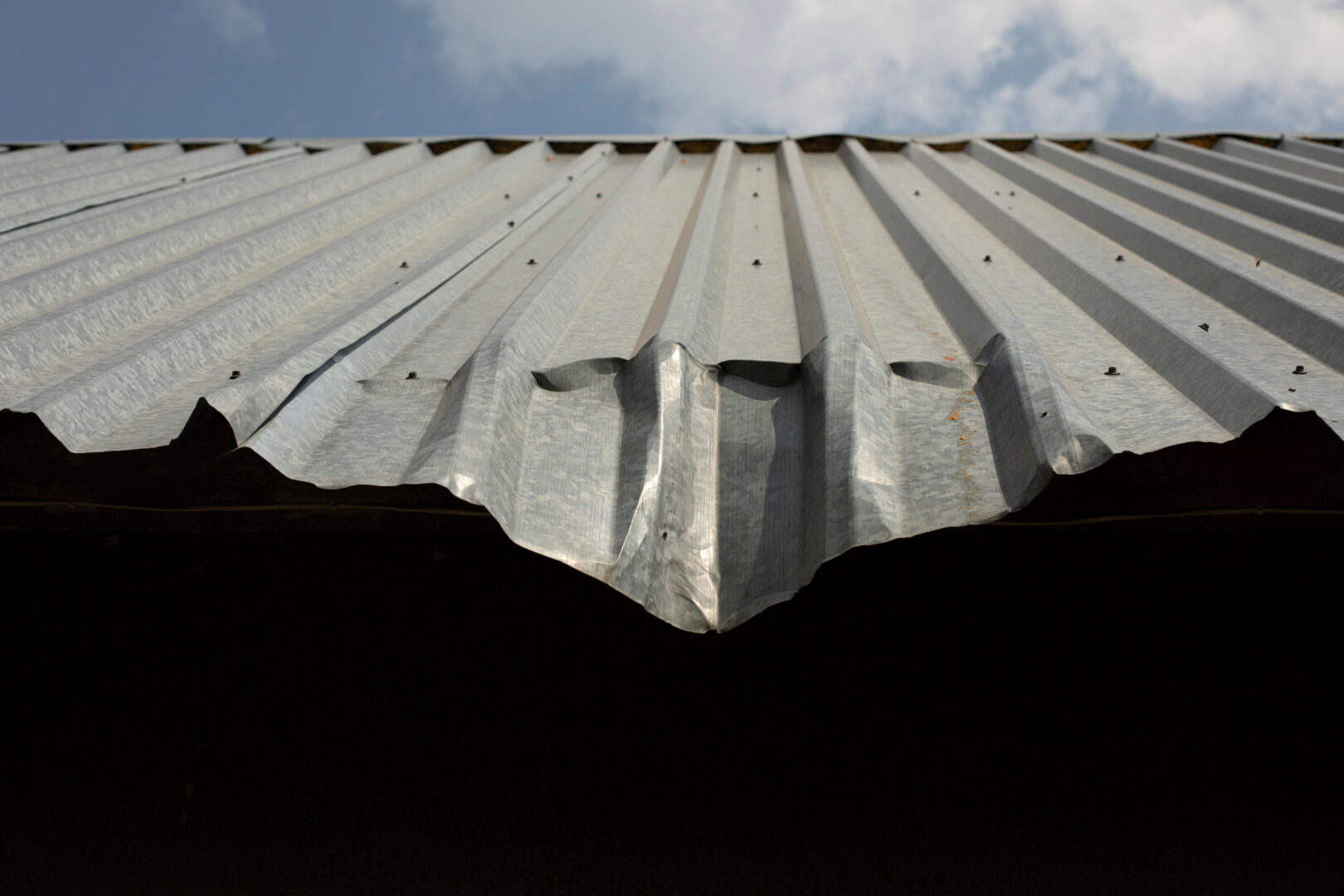
- Loose or Missing Fasteners: Metal roofs are typically secured with fasteners (screws or nails). High winds can loosen or dislodge these fasteners, leading to potential leaks and reducing the roof’s overall stability.
- Dented or Deformed Panels: Intense winds can propel debris or hail, causing dents or deformations in metal roof panels. Inspect the surface for any visible signs of impact.
- Scratches or Abrasions: Wind-driven debris, such as branches or other objects, can cause scratches or abrasions on the metal surface. While these may not compromise the roof’s integrity, they can affect its appearance.
- Bent or Displaced Ridge Caps: The ridge cap is the topmost part of a metal roof. Strong winds may bend or displace the ridge caps, potentially allowing water to enter the roof.
Signs of Wind Damage to a Slate Roof
Slate roofs are known for their durability and resistance to many weather conditions, including wind. However, severe windstorms can still cause damage to slate roofs. Here are some signs of wind damage on a slate roof:
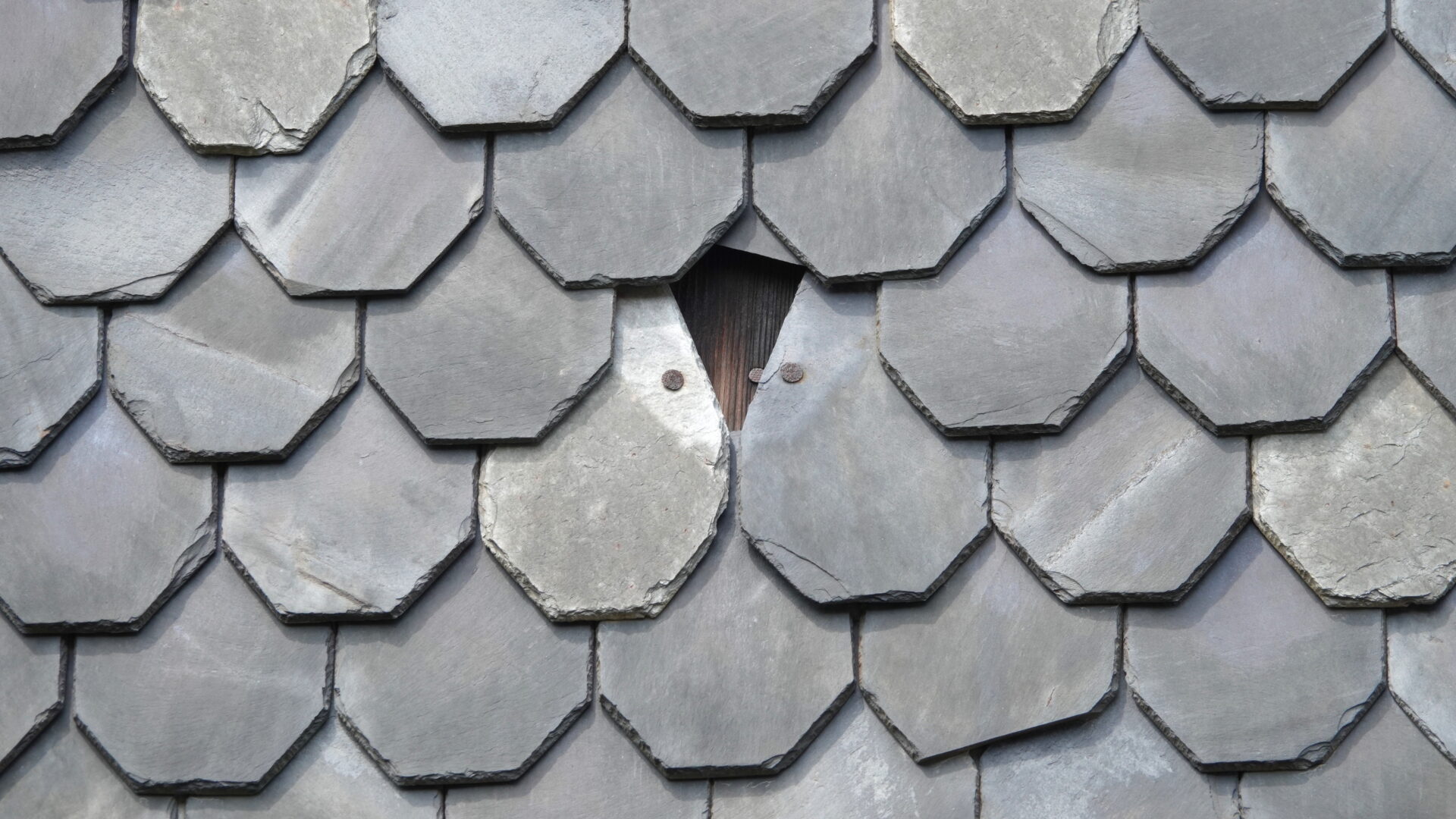
- Missing or Displaced Slate Tiles: High winds can dislodge or completely remove individual slate tiles from the roof. Missing tiles leave the underlying structure exposed and vulnerable to water penetration.
- Cracked or Broken Slate Tiles: Wind-driven debris or the force of the wind itself can cause slate tiles to crack or break. Inspect the roof for any visible signs of damaged tiles.
- Shifted or Uneven Rows: Strong winds can shift or displace individual rows of slate tiles, creating an uneven appearance on the roof. This may compromise the overall integrity of the roofing system.
- Damage to Ridge Tiles: The ridge tiles along the top of a slate roof may be vulnerable to wind damage. Inspect for any displaced or damaged ridge tiles that could affect the roof’s performance.
Signs of Flat Roof Wind Damage
Flat rubber roofs are particularly vulnerable to wind damage due to their large surface area and low pitch. Some signs of wind damage to a flat roof include:
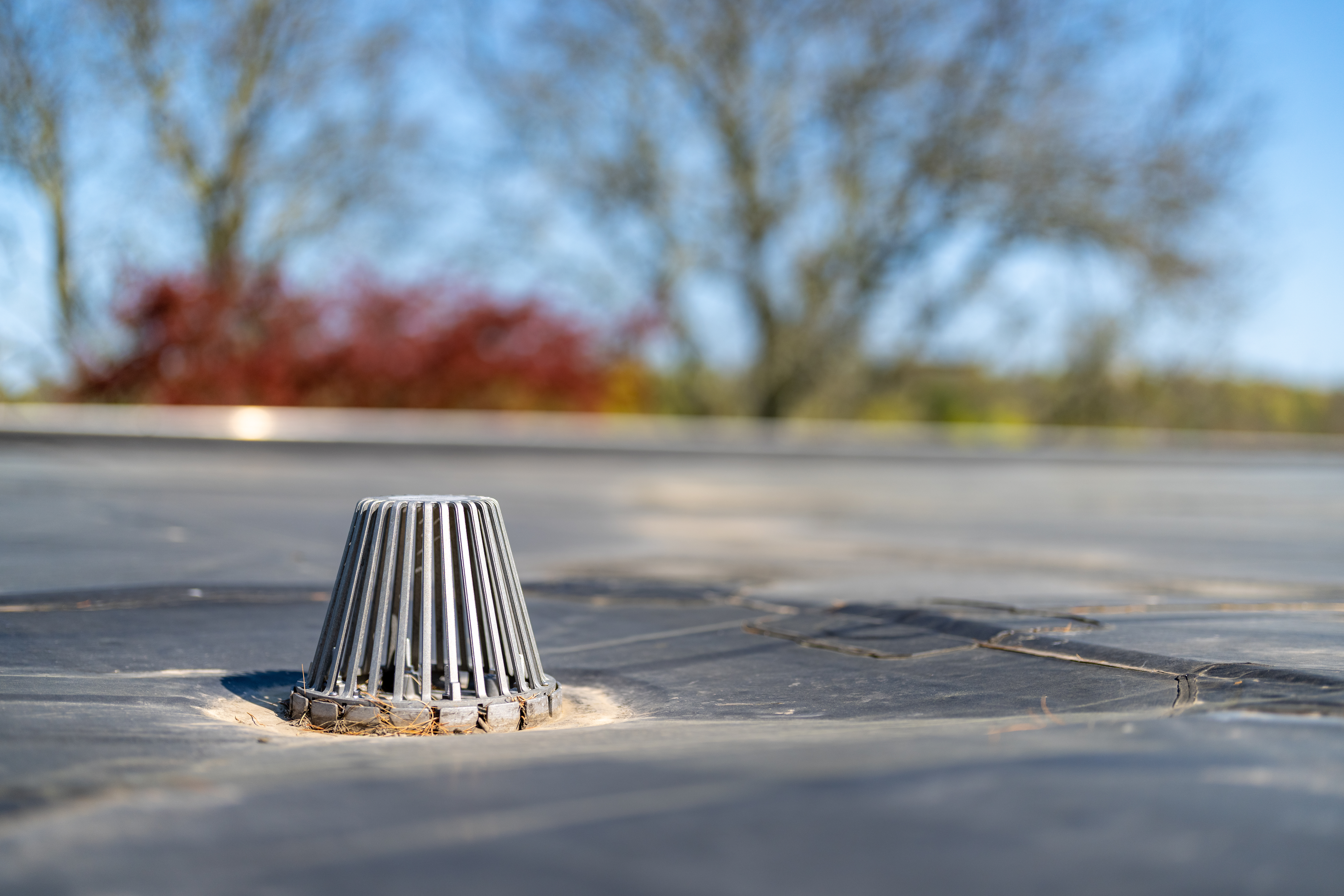
- Torn or Lifted Roofing Membrane: High winds can lift the roofing membrane, especially if it’s not properly adhered or secured. Look for visible tears, bubbles, or areas where the membrane has been lifted.
- Exposed or Displaced Insulation: Insulation beneath the roofing membrane may be exposed or displaced by strong winds. This can compromise the insulation’s effectiveness and lead to energy efficiency issues.
- Cracked or Broken Sealant: Sealant around seams, vents, and other penetrations may crack or break under the force of strong winds, allowing water to infiltrate.
- Damaged Roofing Accessories: Items like rooftop HVAC units, satellite dishes, or solar panels can be damaged or dislodged by high winds. Inspect these accessories for signs of movement or damage.
Other Signs of Wind Damage to Roofs
While specific types of roofs may exhibit distinct signs of wind-related issues, there are overarching manifestations that extend across various roofing materials and structures. Some signs of wind damage that can affect all roof types include:
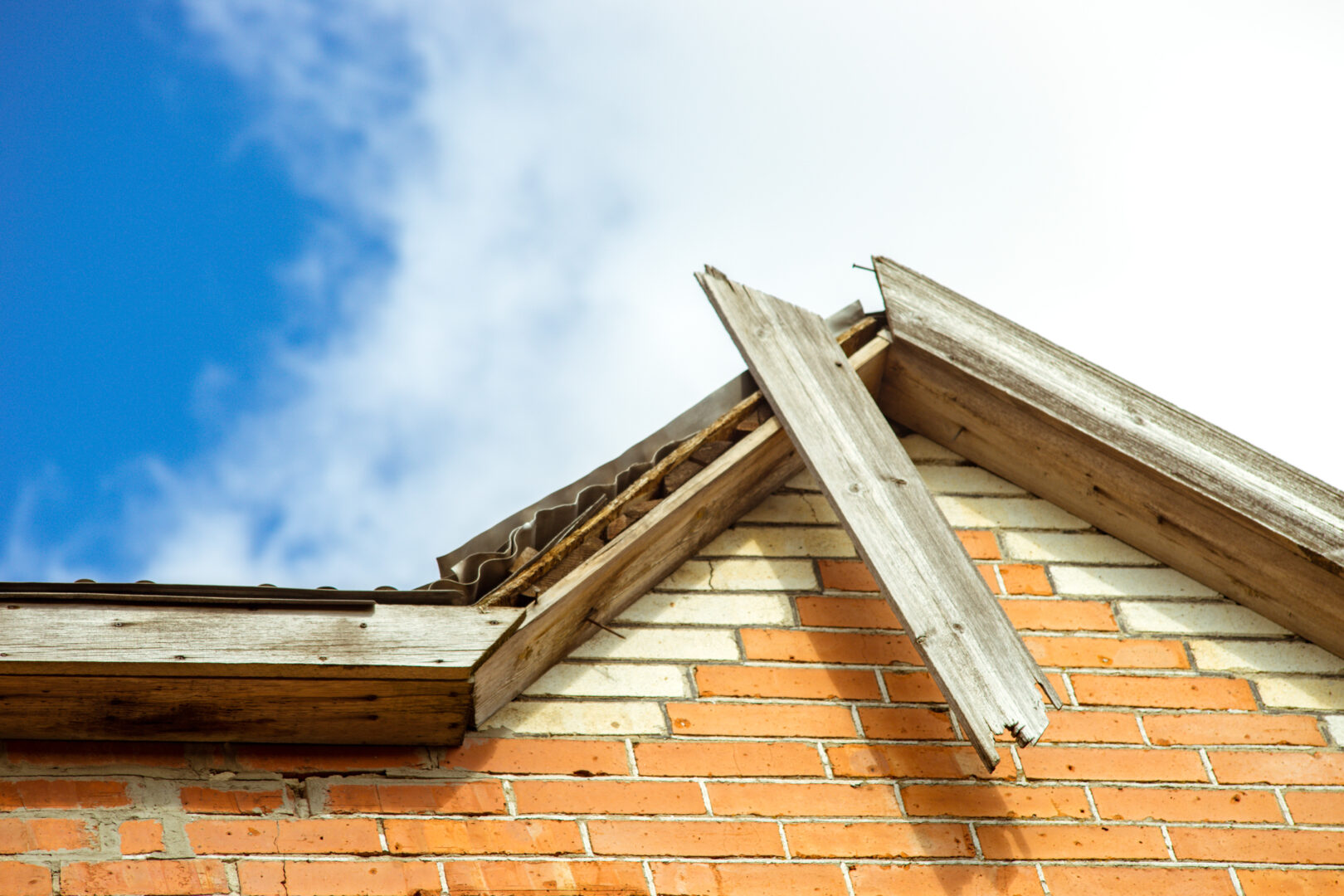
- Debris Accumulation: Check for debris such as branches, leaves, or other objects that may have accumulated on the roof during a windstorm. Accumulated debris can mean structural damage, punctured roofing material, or drainage issues.
- Water Leaks: Wind damage may create openings in the roof, allowing water to enter and leading to leaks. Check for signs of water damage inside the building, such as stains or dampness on ceilings and walls.
- Loose or Damaged Flashing: Flashing around chimneys, vents, and other roof penetrations can be damaged or loosened by high winds, leading to water infiltration.
- Loose or Damaged Eaves and Gutters: The wind can impact eaves, gutters, and downspouts, potentially loosening or damaging these components. Proper drainage is crucial for preventing water damage, so check for any issues in these areas.
Roof Wind Damage Repairs
It’s important to regularly inspect your roof, especially after severe weather events, to identify and address any potential damage promptly. If you suspect wind damage, be sure to document your findings and address any issues with temporary fixes. However, it’s advisable to consult with a professional roofing contractor to assess the extent of the damage and recommend appropriate repairs.
At Vermont Construction Company’s Roofing Division, we specialize in efficient and effective roof repairs. Our team of experienced professionals can quickly assess and address wind damage, ensuring your roof is restored to optimal condition. From replacing missing shingles to reinforcing weakened structures, we have the expertise to handle a wide range of wind-related issues, both reactively and proactively.
How to Protect Your Roof From High Winds
Protecting your roof from high winds involves a combination of preventive measures, regular maintenance, and, when necessary, timely repairs. Additionally, investing in high-quality roofing materials and professional installation can go a long way in mitigating the impact of winter winds. Here are some steps you can take to enhance the wind resistance of your roof:
- Choose a Wind-Resistant Roofing Material: If you’re installing a new roof or replacing an existing one, consider using materials known for their wind resistance, such as metal, concrete tiles, clay tiles, or synthetic roofing materials.
- Ensure Proper Installation: Professional installation is critical for the wind resistance of any roofing material. Make sure to hire a qualified roofing contractor with experience in installing roofs in your specific geographic area.
- Use Wind-Resistant Underlayment: Underlayment is a protective barrier between the roofing material and the roof deck. Choose a high-quality, wind-resistant underlayment that provides an additional layer of protection.
- Trim Overhanging Branches: Trim branches from nearby trees to prevent them from falling onto the roof during high winds. Overhanging branches can cause impact damage or lead to debris accumulation on the roof.
- Regular Roof Inspections: Conduct regular visual inspections of your roof, especially after severe weather events. Look for signs of damage, such as missing or lifted shingles, damaged flashing, or loose roofing materials. When necessary, hire a professional to do a thorough inspection of your roofing system, including materials, flashing, eaves, and gutters.
- Consider Investing in Roof Wind Straps or Clips: Wind straps or clips can be added during installation or as a retrofit to help secure roofing materials, especially in areas with a high risk of wind uplift.
If you have specific concerns or if your area is prone to high winds, consulting with a professional roofing contractor for a thorough assessment and recommendations is recommended.
Conclusion:
Understanding the potential impact of wind on roofs is a fundamental aspect of responsible homeownership. To prevent wind damage, it’s imperative to employ proactive measures and prioritize timely maintenance. At Vermont Construction Company Roofing Division, we are committed to ensuring the longevity and resilience of your roof against the challenges posed by windy weather. To do so, we offer high quality roofing materials, proper roofing installations, conduct regular inspections, and even offer a wind warranty (up to 130mph for the first 15 years) to help fortify your roof. Contact us today for a comprehensive roofing assessment and let us be your partner in weathering the storm.
